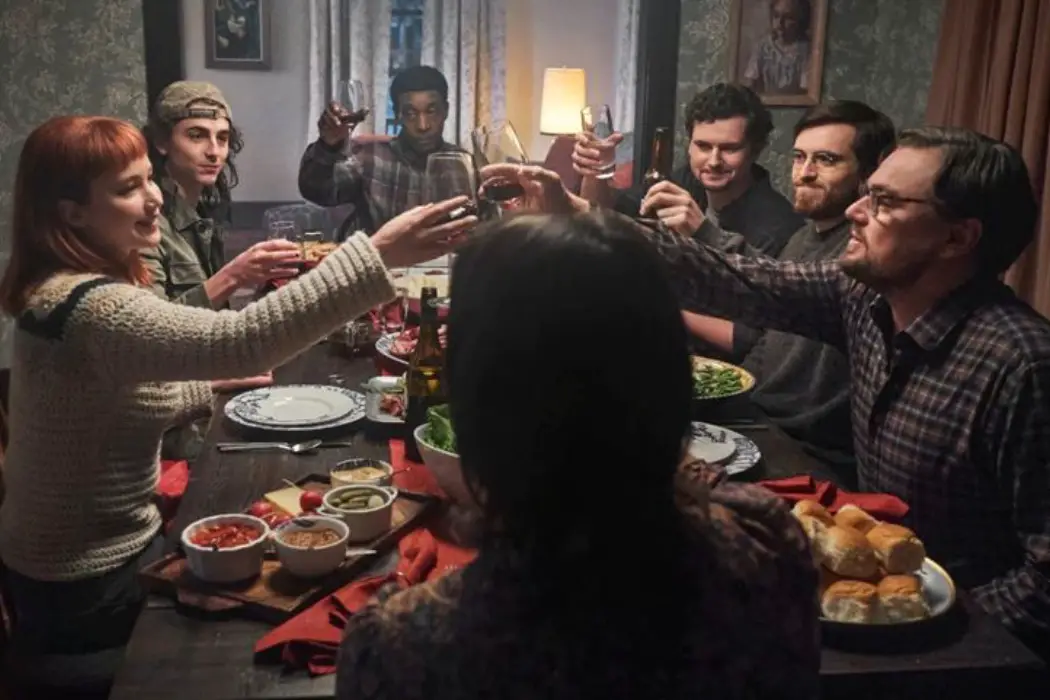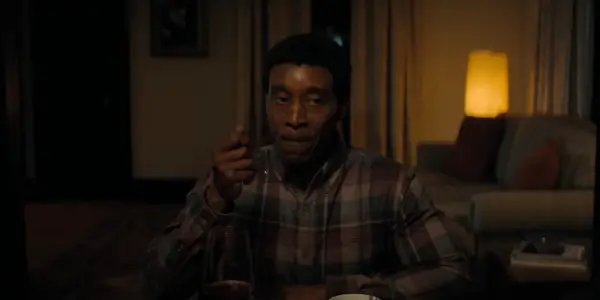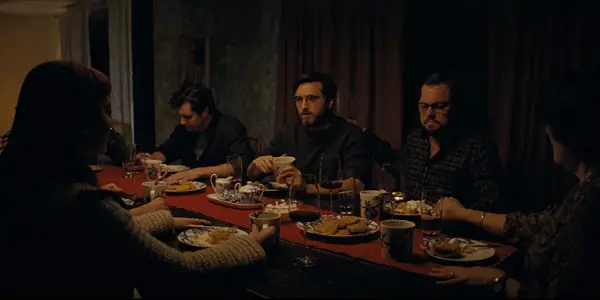The Best Edit In DON’T LOOK UP

Film critic, Ithaca College and University of St Andrews graduate,…
The satirical sci-fi comet disaster film Don’t Look Up has some of the year’s most chaotic editing. Director and writer Adam McKay’s mile-a-minute script bounds across six months as two astronomers, Dr. Randall Mindy (Leonardo DiCaprio) and Kate Dibiasky (Jennifer Lawrence), try to warn the world about an impending meteor set to wipe out all life on Earth. And editor Hank Corwin, who previously worked with McKay on The Big Short and Vice, snaps together news clips, text inserts, narrative footage, and footage from around the world with frightening hyperactivity. But there’s one edit, in the film’s final 10 minutes, that moved me, that made the whole film click into place for a moment.
Armageddon Apple Pie
The climax juxtaposes the mission room with the dining room. President Orlean (Meryl Streep), her son (Jonah Hill) and billionaire oligarch Peter Isherwell (Mark Rylance) oversee a desperate last-minute mission to destroy the comet, while Mindy, his friends and his family gather around the table for one last supper. Among them is Rob Morgan’s character, disgraced (former?) Planetary Defense Coordination Office head Dr. Teddy Oglethorpe.
The climax is some of McKay’s best filmmaking: The mostly unspoken dread of the dinner table erupts in cutaways to the mission room and the anxiety on the streets. The Mindys talk about what they’re thankful for, they pass around salad, and there’s a palpable comfort and obvious Americana to it.
During dessert, Kate admits that her apple pie is store-bought rather than homemade, and between the riots, anarchy and Tyler Perry drinking liquor, which all signify the end of the world, Teddy says, “If I’m going to be completely honest, which at this moment, why not? I actually like the junky taste of store-bought better than homemade.” And he takes a bite of pie and savors it. The dialogue is noticeably L-cut — the shot of Morgan talking cuts while his line from that first shot still plays.

And then, just for a second, the film freezes. And we hold on him. It’s subtle, but it’s still a movie. The human eye can tell when a moving image suddenly stops moving. He’s in the middle of eating pie, and we see Teddy centered in the frame, at the head of the table, taking comfort in some time with his found family.
And then two minutes later, he and everyone in that room are dead.
Freeze-Frames
Corwin’s editing here annoyed me, as it did in the rest of the film. Don’t Look Up is rife with quick cuts, noticeably out-of-sync dialogue, and seemingly random sporadic freeze-frames. But with this shot of Teddy eating his pie, when the freeze-frame is so apparent, it struck me that there was an expressionistic choice at play here.
The logic behind the freeze-frames changes throughout the film, but freezing on Teddy eating pie and then cutting to Mindy looking up at him shows the character almost trying to retain the memory of Teddy at that moment — that’s the characters’ lasting impression of this man, who gave everything and ultimately lost everything bargaining for the hope that the people in charge give enough of a damn about us to save us. It’s an image not of power, respect, or tragedy for this government official, but one of honor and warmth — an institutional man brought down to the living room, eating pie and smiling with friends at the doorstep of Armageddon.
After the comet makes an impact, we see a similar freeze-frame in one of many Roland Emmerich-esque shots of destruction and mayhem that follows, as a man runs for his life. Sometimes, Corwin’s freeze-frames lock images of chaos into our brains, like when it’s used early on as Kate vomits into a White House trash bin. At dinner, the technique implies a snapshot memory. We freeze on Teddy, then later on Mindy squeezing his wife (Melanie Lynskey)’s hand.

At the end of the world, every little moment at dinner sparkles in the gloom. Little gestures, like Mindy’s hand on his son’s shoulder. Teddy’s grip on his coffee mug. Kate’s stammer. Corwin uses the freeze-frame to seal this humanity in amber, to provide us with a sense of loss — specifically, in keeping with the film’s central plea on climate change and what we’re losing when we allow the climate crisis to swallow our planet whole.
Conclusion
The freeze-frame on Teddy is such a crystalline poetic moment that it suddenly made the film’s frenetic, jumpy, ludicrous editing style work for a minute. When we’re faced with bizarre editing choices — or just flat-out wrong editing — especially on a project of this scale and budget, it’s important not to merely criticize it for being wrong, but to instead seek to understand why.
Maybe why it’s wrong. Maybe why we dislike it. Why it angers or frustrates us. Why it goes against cinematic language. Or why, in this case, why the choice was made. Why it’s important that we take an extra several dozen frames to see Morgan eating pie and draw our attention to it with the initial L-cut, why it’s important to rip us out of the narrative flow for this moment.
Good editing or not, Corwin’s impressive, ambitious work in Don’t Look Up is at least highly expressionistic and motivated. In McKay’s full-speed-ahead story, Corwin finds in the space of a single edit the ability to remind us that we’re watching a film about people. About their hope, their fear. About the value of human life and the cost of inaction in the face of existential danger.
What do you think of the editing in Don’t Look Up? Did you appreciate the freeze-frames or think they pulled you out of the film? Comment below and let us know.
Does content like this matter to you?
Become a Member and support film journalism. Unlock access to all of Film Inquiry`s great articles. Join a community of like-minded readers who are passionate about cinema - get access to our private members Network, give back to independent filmmakers, and more.
Film critic, Ithaca College and University of St Andrews graduate, head of the "Paddington 2" fan club.













